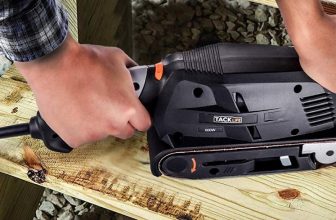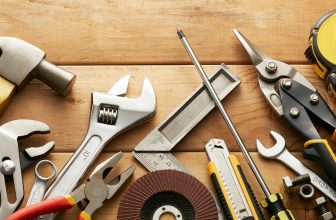When they are at their most useful, trauma shears can be a lifesaver. Thankfully, most of us won’t have to use them the same way as the emergency services might, but for cutting bandages and getting through old clothes they have other uses around the home. If you are looking at a blunt pair, or considering buying them but aren’t sure how long they will last, we have a few tips to help.
When Do You Know That Trauma Shears Need Sharpening?
The fact is, these shears are sharp and should get through most fabrics with ease. If the trauma shears you have aren’t up to the task and make difficult work of cutting bandages then it is time to take action.
So, Can You Sharpen Them?
The simple answer is yes, but there are different ways to sharpen trauma shears. Like many other blades, it doesn’t take long to create a sharper cutting surface.
Ideally, you will have access to a sharpening stone and one with dual coarseness on either side.
Rub a little water on the stone first, and work over a paper towel so you can dispose of any debris easily. Take the shears apart so you get more space to work with, this can help prevent an accident that is easily avoided. Gripping the handle, and with the flat side down, work at an angle and pull the blade back towards where you are. Repeat this to sharpen the cutting edge with it flat on the stone.
Usually, around 20 strokes are all it takes but you can mark the blade with a felt tip pen and when it is gone, the blade should be sharp. If your trauma shears are particularly blunt, use the coarser side first then the finer side of the stone. Alternatively, if they aren’t so bad, skip the coarser side and go with the finer one.
Should I Buy New Trauma Shears?
When you might notice some rust of the thought of sharpening them seems too much of a bother, it can be a good idea to invest in a new set. Because they are reasonably priced, it is worth doing, especially since they can be a similar price to a sharpening stone anyway.
How Do I Know If My Trauma Shears Are Sharp?
One of the easiest ways to test any type of scissors for sharpness is on dry tissue. Slowly, and without using a lot of pressure, move the shears closer. This is where you can usually see if there are nicks and imperfections in the blade.
How Do You Clean Trauma Shears?
Whether you have used them to cut bloody clothes, a bandage, or whatever else, it is important to keep your trauma shear hygienic by cleaning them after each use. One of the best ways of cleaning them is using alcohol wipes. These kill harmful bacteria but are not corrosive to stainless steel which is a common material for the blades.
Bleach wipes on the other hand can be corrosive to certain grades of stainless steel so it is best to stick with alcohol wipes.
What Are Some Other Uses For Trauma Shears?
Although the common medical led uses are well known, there are other uses for trauma shears that are surprising, but make sense.
A lot of people use them for camping trips because they can pierce dry grass and even help to cut kindling for the fire. Combine this with a shear that easily gets through the fishing line and they can be a useful tool to keep around.
One of the most interesting uses is for starting fires. That’s right, certain grades of stainless steel trauma shears can be used with a Ferro rod to create sparks that can light a fire. When you’re in a tough spot, they can be just what you need.
Why Are Trauma Shears Bent?
This is a common question and part of what makes them so distinguishable. The answer is simple and practical. Because they are used by emergency responders to cut through clothing such as denim and even seat belts, the curve has been strategically placed to ensure they do not snag or cut the skin.
This ensures a smooth cut along the body without causing harm.
Can You Take Trauma Shears On A Plane?
The rules differ from airline to airline and country to country but as a general guideline, a lot of the time, if the blade is under 4 inches and they have a blunt tip, trauma scissors can be stored in a carry on bag. Alternatively, they can go in checked baggage.
We advise anyone considering traveling with traumas shears to double-check before they fly.
What Can Trauma Shears Cut Through?
Trauma shears are well known for their sharp blades and make light work of some thicker fabrics. Because of their long shears, they are ideal for making cuts the length of trousers and easily get through denim when they are sharp.
Other materials include seat belts, leather, and even some thin metals among other materials. This makes them ideal for emergency services who don’t necessarily know what they are about to face when they arrive at a scene.
Are Bandage Scissors The Same?
Although they bear similarities, trauma shears and bandage scissors are not technically the same. Bandage scissors are smaller in size but do have a similar straight, thin blade and are used similarly only to cut bandages and remove the dressing.
Why Do Scuba Divers Use Trauma Shears?
Trauma shears are becoming an increasingly popular tool for fishing trips and scuba diving because they are considered a safer alternative to a knife. They are great for cutting reeds, loose fishing lines and because of the curved end, there is no risk of accidental jabbing.
A lot of scuba divers keep a knife handy should they or a fellow diver become tangled in the fishing line and need to be freed urgently. It is not uncommon for netting to trap a diver which and trauma shears represent a safe and reliable means of cutting oneself free.





